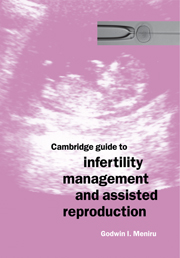Book contents
- Frontmatter
- Contents
- Preface
- Foreword
- Acknowledgements
- Introduction
- 1 The male reproductive system
- 2 The female reproductive system
- 3 Fertilization, implantation and early development
- 4 Male factor problems
- 5 Female factor problems
- 6 Evaluation of the infertile couple
- 7 Medical and surgical treatment of infertility
- 8 Conventional in-vitro fertilization treatment
- 9 Intracytoplasmic sperm injection
- 10 Surgical sperm retrieval
- 11 Intratubal replacement of gametes and embryos (GIFT, ZIFT)
- 12 Intrauterine insemination
- 13 Cryopreservation of gametes, ovarian tissue, testicular tissue and embryos; frozen embryo replacement
- 14 Assisted hatching
- 15 Preimplantation diagnosis of genetic disease
- Appendix: Acronyms in assisted reproduction technology
- Index
13 - Cryopreservation of gametes, ovarian tissue, testicular tissue and embryos; frozen embryo replacement
Published online by Cambridge University Press: 11 September 2009
- Frontmatter
- Contents
- Preface
- Foreword
- Acknowledgements
- Introduction
- 1 The male reproductive system
- 2 The female reproductive system
- 3 Fertilization, implantation and early development
- 4 Male factor problems
- 5 Female factor problems
- 6 Evaluation of the infertile couple
- 7 Medical and surgical treatment of infertility
- 8 Conventional in-vitro fertilization treatment
- 9 Intracytoplasmic sperm injection
- 10 Surgical sperm retrieval
- 11 Intratubal replacement of gametes and embryos (GIFT, ZIFT)
- 12 Intrauterine insemination
- 13 Cryopreservation of gametes, ovarian tissue, testicular tissue and embryos; frozen embryo replacement
- 14 Assisted hatching
- 15 Preimplantation diagnosis of genetic disease
- Appendix: Acronyms in assisted reproduction technology
- Index
Summary
Introduction
The availability of cryopreservation technology has extended the scope of human assisted conception treatment and made it more convenient for patients. For example, prior freezing of sperm may be the only way in which a couple can have assisted conception treatment if the male partner has to be away at a critical time during the treatment; the frozen sample is thawed and used when required. Donor insemination has become safer because donated semen samples are frozen and quarantined for six months, at the end of which the donor is re-tested for evidence of the human immunodeficiency virus (HIV) infection, or for any of the other screened infections. Good quality embryos frequently remain after transfer of the required number into the woman; these can be frozen and used at a later date, if required, instead of the couple going through another cycle of in vitro fertilization (IVF) treatment. Although more problematic, freezing of oocytes and ovarian tissue is now taking place in research institutions and should hopefully become widely available for clinical use in future. Cryopreservation is an important component of the management strategy for azoospermia using surgical retrieval of sperm directly from the genital tract or from testicular tissue. The conduct of cryopreservation in humans is based on information originally derived from animal work, where sperm cryopreservation for example, has been carried out for several decades for animal breeding. This chapter will consider the principles of cryopreservation followed by a general description of the practical steps.
- Type
- Chapter
- Information
- Publisher: Cambridge University PressPrint publication year: 2001



